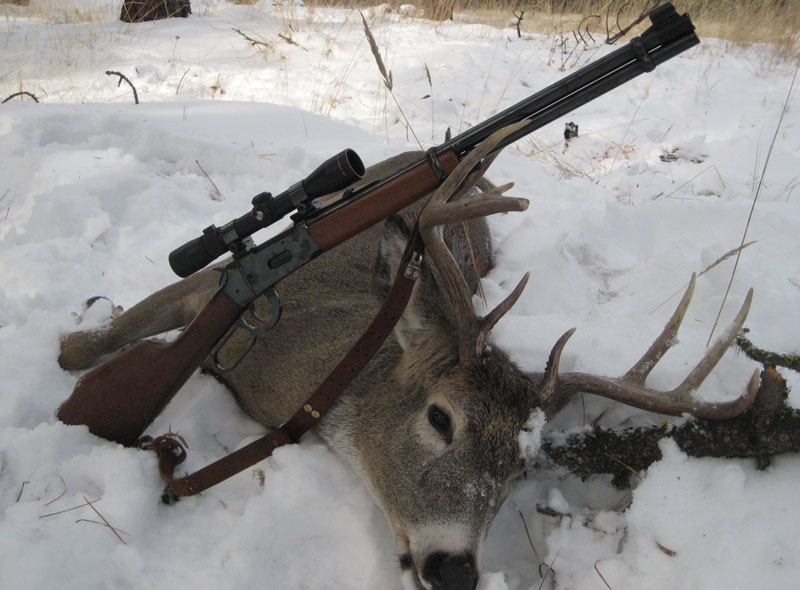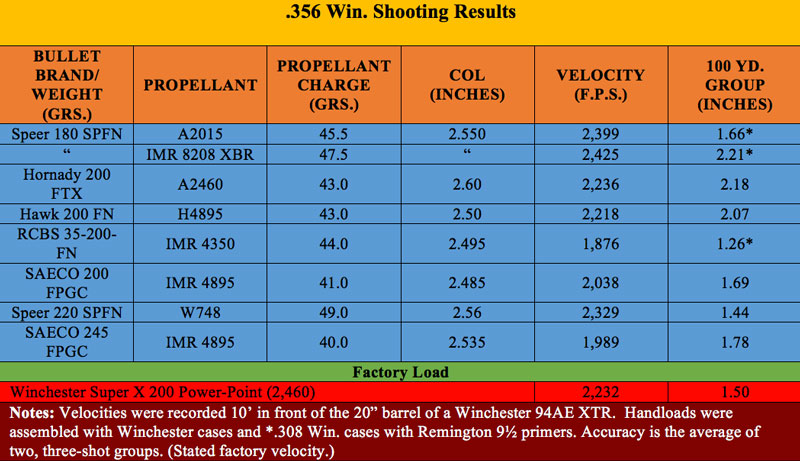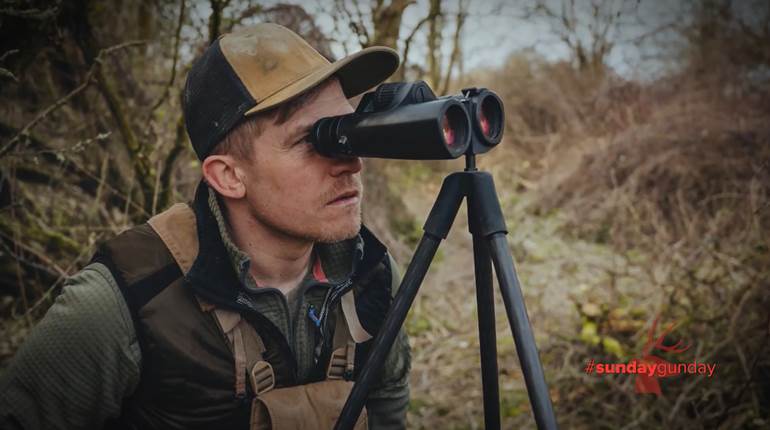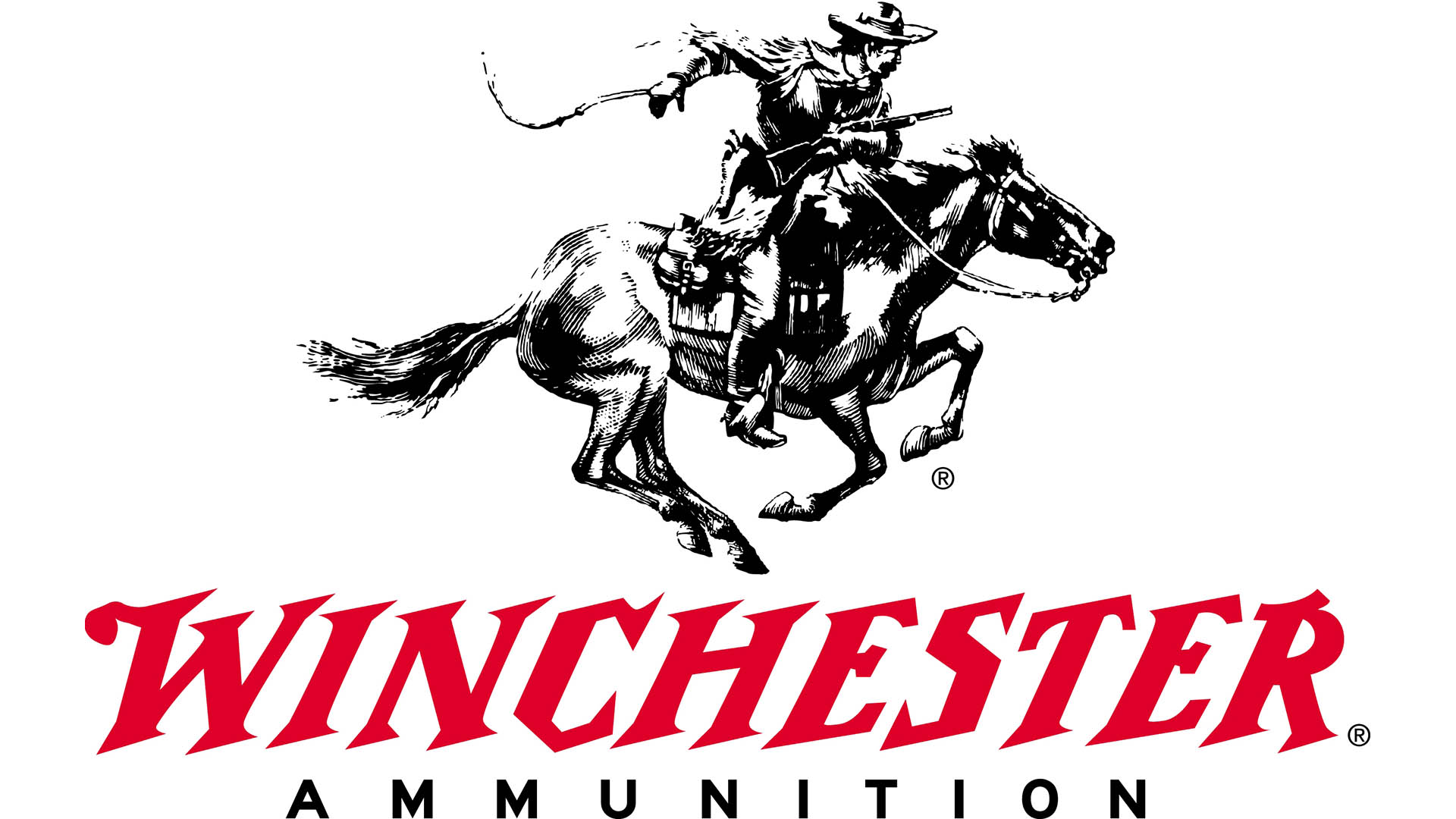
The story of the .356 Win. is a sad tale of changing hunting preferences that dictated a shift in hunting rifles and cartridges well before its introduction in 1982. The .356 Win. was saddled with the brush-cartridge label from its start. However, farming practices had transformed many woodlots of yesteryear into vast fields of crops. Hunters wanted cartridges capable of making long shots in case they spotted a deer far across those fields. More to their liking was a 7 mm or .300 magnum chambered in a bolt-action rifle, with a big variable scope sitting on top like a sail on a ship.
Short History
Winchester introduced the .356 Win. in its lever-action Model 94AE (Angle Eject) XTR with a 20” barrel. The Big Bore label was also applied to the carbine to denote the thicker walls of the receiver around the bolt lock to withstand the .356 Win’s 52,000 copper units of pressure (compared to the .30-30 Win.’s 38,000 CUP.) Although the Model 94AE came with opens sights, it was intended for a scope mounted low over the receiver with cases kicked out the right side and a high stock comb.
Winchester Ammunition still lists .356 Win. cartridges. However, finding some is next to impossible.
Multitudes of hunters sidestepped the Model 94AE .356 Win. Winchester dropped the carbine in 1986. It reappeared for a brief time the following year, before being dropped for good in 1988. Marlin also chambered its lever-action 336ERC in .356 Win. beginning in 1983. It lasted only until 1986.
About 10 years ago, I lamented to a friend that I had always wanted a Winchester Model 71 chambered in .348 Win., but prices for the rifles were sky high.
“The .356 does the same thing as the .348,” he replied. “I have two Model 94 .356s and I’ll sell you one.”
Stamped on the barrel of the Model 94 I bought is “Model 94AE XTR.” “XTR” means “Extra” as in checkering. However, the forearm and stock are plain. It does have a Monte Carlo stock comb and a straight grip. Some people complain the Monte Carlo comb is ugly and awkward to mount, but it positions my eye right in line with the 2-7X scope on the carbine. According to my fish scale, my .356 weighs 8 lbs. with the scope in Weaver aluminum rings. That is no feather, and it is about the same weight of many bolt-action rifles chambered in magnum cartridges.
This group was shot with Winchester 200-gr. .356 Win. factory loads.
Handloading Only Option
Winchester originally loaded 200- and 250-gr. Power-Point bullets at 2,460 f.p.s. and 2,160 f.p.s. The 250-gr. load was dropped long ago. The Winchester Ammunition website still lists the 200-gr. load. Right after I purchased my .356 I luckily bought two boxes of the 200-gr. factory loads and 100 .356 Win. cases for handloading. Today cartridges and cases are as scarce as honest politicians.

Handloaders do have a few options to make rimmed .356 Win. cases. Hornady and Winchester .308 Win. cases are readily available. These cases can be run through a .356 Win. sizing die to expand their necks and convert them to .356 Win. Also, Redding sells a case forming die and trim die to convert .444 Rem. cases to .356 Win. cases.
I take the less expensive route. My stash of .356 Win. cases are reserved for hunting. For casual shooting I neck out .308 Win. cases in a .356 Win. sizing die. Before using neck-out .308 Win. cases I read some Model 94s cycled rimless necked-out .308 Win. cases just fine. With bated breath, I fed a necked-out .308 cartridge into my 94’s magazine. A slight push down on the finger lever, though, caused the cartridge to pop out of the magazine and jam underneath the carrier. Removing it required disconnecting the finger lever. So I single load necked-out .308 Win. cases.
SAECO 200 FPGC cast bullets and IMR 4895 propellant shot this group from a Winchester Model 94AE .356 Win.
However, .356 Win. cases have thicker walls and less propellant capacity than .308 Win. cases. To highlight that difference, SAECO 200-gr. FPGC cast bullets loaded in .356 Win. cases registered an average of 2,038 f.p.s. fired with 41.0 grs. of IMR 4895. The same load averaged 1,939 f.p.s. fired in necked-out .308 Win. cases.

Cast bullets and the .356 Win. go together. The RCBS 35-200-FN is on the left and the SAECO 245 FPGC on the right.
When the 356 Win. was introduced, Winchester warned against using round-nose bullets in a .356 Win.’s tubular magazine to prevent a cartridge firing in the magazine due to bullet tip-to-primer contact during recoil. The selection of flat point bullets is adequately covered by Speer 180- and 220-gr. SPFN bullets, Hawk 180-, 200-, 225- and 250-gr. FP bullets and cast bullets from RCBS 35-200-FN and SAECO 200 FPGC and 245 FPGC molds. The soft Flex Tip on Hornady 200-gr. FTX bullets allow using them in tubular magazines.

The crimping groove on SAECO 245 FPGC cast bullets is in the wrong place for correct seating depth in the .356 Win. However, a taper crimp applied with a to the SAECO bullet by running a cartridge partially into a .356 Win. sizing die with the sizing button/primer punch removed.
The .356 Win.’s maximum cartridge length is 2.560”, which is easily held with most flat nose bullets. However, costly .356 Win. cases must be trimmed .04” shorter than 2.005” trim length to meet that cartridge length with the FTX’s relatively long nose. FTX bullets seated at a cartridge length of 2.60” set the case mouth, of cases trimmed to 2.005”, even with top of the crimping cannelure and fortunately still cycle through the action of my Model 94.
.35-caliber Aversion
Some nights when the windows are open to let in the summer air drifting down from Vermont, howls can be heard from American Hunter field editor Bryce Towsley lamenting why so few hunters share his love of .35-cal. cartridges. The handful who do though, declare .35-cal. bullets carry some magical qualities.

These .35-cal. cartridges are somewhat common, but by no means popular. From the left, .35 Rem., .356 Win. and .35 Whelen.
A Speer 220-gr. SPFN bullet carried no mystical clout when I fired it from my .356 to kill a whitetail buck. The bullet punched through both its lungs and sailed out the far side into the cold November air. The buck made a mad dash for 40 yds. and fell over dead. That performance was about the same as a 100-gr. bullet fired from a .243 Win.

This whitetail buck was taken with a Model 94AE .356 Win. shooting Speer 220-gr. bullets.
I fired a SAECO 200 FPGC bullet cast of wheel weights to shoot my next buck with the .356 Win. I sat under a tree enjoying the morning when I saw the buck walking toward me. The buck stopped at 50 yds. It took a step just as I pulled the trigger. A bloom of red appeared on the rear of its ribs and I knew it was a bad shot. I quickly worked the lever, but the buck fell over dead before I closed the bolt on a fresh cartridge. I lowered the rifle and looked at it, perhaps the .356 did possess some mysterious power.

This whitetail buck fell over dead on the spot when it was hit with a 200-gr. cast bullets.


A Winchester Model 94AE .356 Win. Speer 220-gr. bullets paired with W748 powder shot this group at 100 yds.
Speer 180-gr. SPFN bullets paired with A2015 propellant shot this group from a Winchester Model 94AE .356 Win.





































